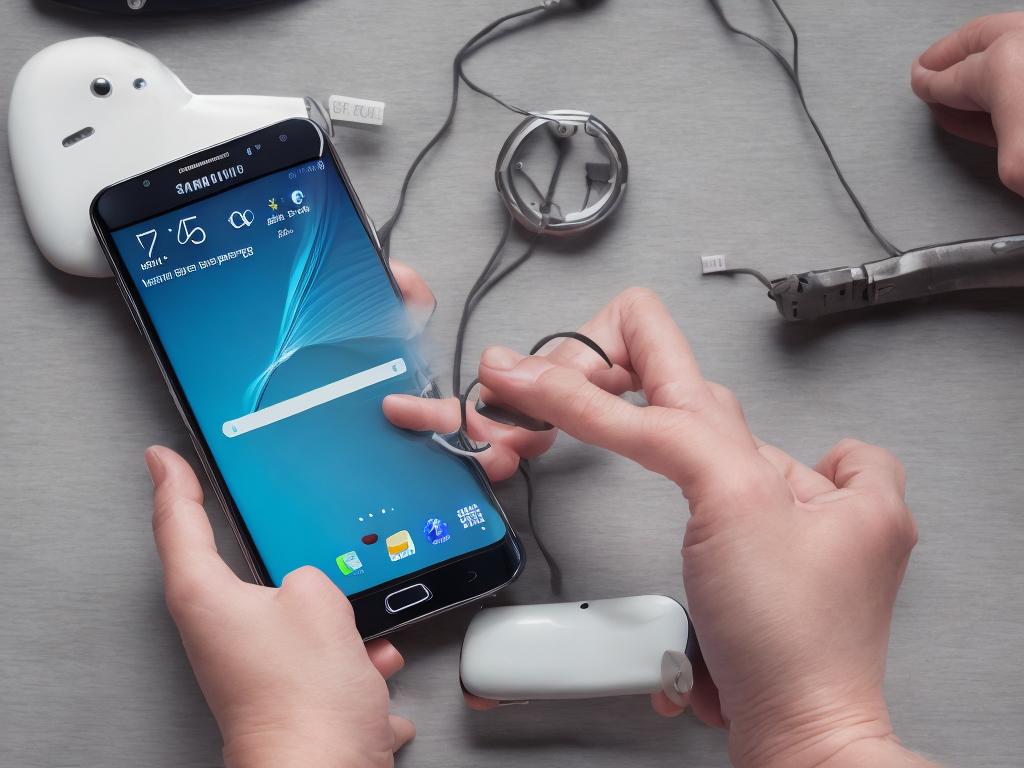
Most of us are familiar with the incessant buzz of an emergency alert that seems to always go off at the most inopportune times. Samsung smartphones come with a built-in emergency alert feature that is designed to warn users of natural disasters, terrorist attacks, and other critical events. While these alerts can be crucial during emergencies, they can also be disruptive, particularly when they go off at night or during important meetings. Fortunately, disabling emergency alerts on a Samsung phone is a simple process that can be completed in just a few steps.
Step 1: Access the Settings Menu
To turn off emergency alerts on Samsung, you need to open the phone’s settings menu. To do this, tap the gear icon on your phone’s home screen or in the app drawer. Once you have accessed the settings menu, scroll down the list of options until you find the “Apps” menu. Tap on this option to proceed to the next step.
Step 2: Select Messages
Once you have entered the apps menu, scroll down the list of options until you find the “Messages” app. Tap on this option to open the messaging app’s settings menu.
Step 3: Open the Message Settings Menu
In the “Messages” settings menu, scroll down the list of options until you see the “Emergency Alert Settings” menu. Tap on this option to open the emergency alert settings menu.
Step 4: Turn Off Emergency Alerts
In the emergency alert settings menu, you will see a list of different types of alerts that you can choose to turn off. By default, all alerts are turned on, but you can disable them one by one by tapping on each option and turning off the toggle switch. You can choose to turn off alerts for extreme threats, severe threats, and Amber Alerts. You can also turn off alerts for flash floods, tornadoes, hurricanes, and other weather-related events.
Once you have turned off the types of alerts that you do not want to receive, simply exit the settings menu by pressing the back button on your phone. Your alert settings will be saved automatically, and you will no longer receive alerts for the types of emergencies that you have chosen to disable.
Other Tips for Managing Emergency Alerts on Samsung
If you want to fine-tune your emergency alert settings on your Samsung phone, there are a few additional steps that you can take. For example, you may want to change the alert tone or vibration, or adjust the volume of the alerts so that they do not disturb you during important meetings or events.
To change the alert tone, simply go to the “Sounds and Vibration” menu in the settings and select a different ringtone or notification tone. You can also adjust the volume of the alerts by moving the slider up or down.
Another option is to set up “Do Not Disturb” mode on your phone during certain times of the day or night when you do not want to receive any notifications. To do this, go to the “Sounds and Vibration” menu, and then select “Do Not Disturb.” From here, you can set up a schedule for when you want to enable or disable the “Do Not Disturb” mode.
Final Thoughts
Emergency alerts on Samsung phones can be essential during critical events, but they can also be disruptive if they go off at the wrong time. Fortunately, turning off emergency alerts on Samsung is a simple process that can be completed in just a few steps. By accessing the settings menu, selecting the Messages app, opening the emergency alert settings menu, and turning off the toggle switches for the types of alerts that you do not want to receive, you can take control of your phone’s alert settings and customize them to your preferences. With a few tweaks, you can ensure that your phone is only alerting you when it is really necessary, and you can enjoy peace of mind knowing that you can still receive important alerts when you need to.
 Self-Instruct
Self-Instruct